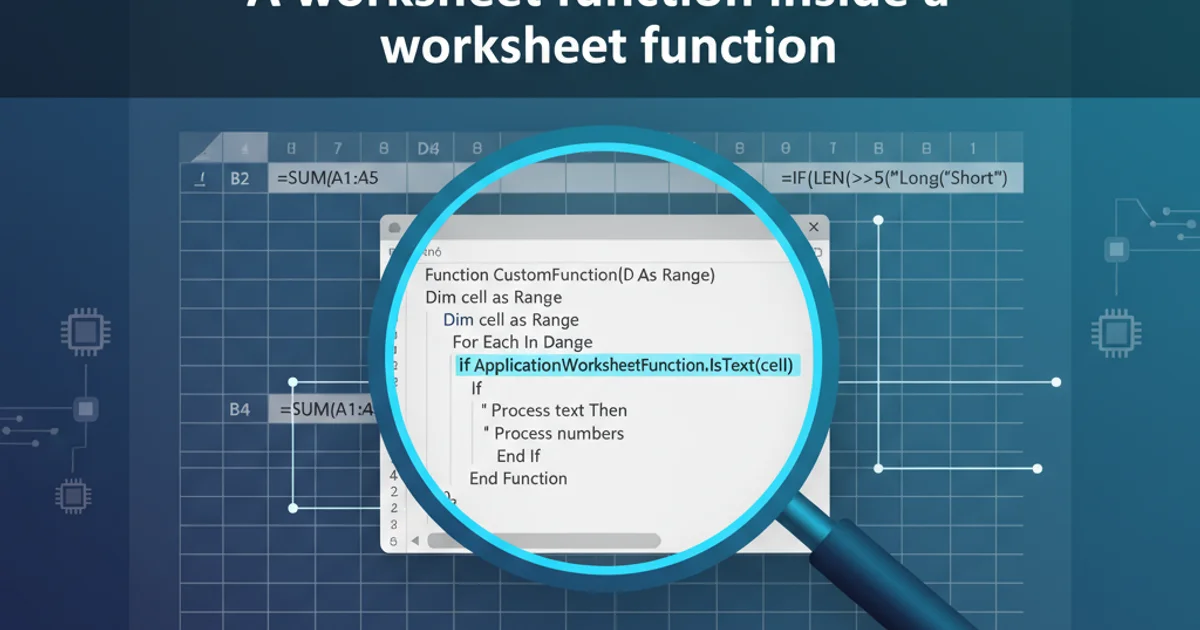Generating point cloud from many 2d images
Categories:
Generating 3D Point Clouds from Multiple 2D Images

Learn the fundamental techniques and practical steps to reconstruct a 3D point cloud from a collection of 2D images, covering Structure from Motion (SfM) and Multi-View Stereo (MVS).
Reconstructing a 3D scene or object from a series of 2D images is a fascinating and powerful technique with applications ranging from robotics and augmented reality to cultural heritage preservation and 3D modeling. This process typically involves two main stages: Structure from Motion (SfM) and Multi-View Stereo (MVS). SfM determines the camera poses and a sparse set of 3D points, while MVS densifies this sparse reconstruction into a rich point cloud.
Understanding the Core Concepts: SfM and MVS
Before diving into implementation, it's crucial to grasp the roles of Structure from Motion (SfM) and Multi-View Stereo (MVS). SfM is responsible for estimating the camera's intrinsic and extrinsic parameters (position, orientation, focal length) and a sparse set of 3D points that are visible across multiple images. It achieves this by identifying and matching features between images and then triangulating their 3D positions. MVS takes the camera parameters and sparse point cloud generated by SfM and then computes a much denser point cloud by analyzing pixel intensities and geometric constraints across multiple views. This results in a more complete and detailed 3D representation of the scene.
flowchart TD
A[Input: Multiple 2D Images] --> B{Feature Detection & Matching}
B --> C[Structure from Motion (SfM)]
C --> D{"Sparse 3D Point Cloud & Camera Poses"}
D --> E[Multi-View Stereo (MVS)]
E --> F[Output: Dense 3D Point Cloud]
F --> G[Optional: Point Cloud Filtering/Meshing]High-level workflow for 3D point cloud generation from 2D images.
Practical Steps for Point Cloud Generation
Generating a point cloud from images involves several distinct steps, often implemented using specialized libraries and tools. While the underlying algorithms are complex, many open-source frameworks abstract away much of the complexity, allowing users to focus on the overall pipeline. Here, we outline a general approach using common tools and concepts.
1. Step 1: Image Acquisition
Capture a set of 2D images of the object or scene from various viewpoints. Ensure significant overlap between consecutive images (typically 60-80%) and maintain consistent lighting conditions. Avoid blurry images.
2. Step 2: Feature Detection and Matching
Identify distinctive features (e.g., SIFT, SURF, ORB) in each image and match them across different views. This step establishes correspondences between pixels in different images that represent the same 3D point.
3. Step 3: Structure from Motion (SfM)
Use the matched features to estimate the camera's position and orientation for each image, along with a sparse set of 3D points. This is often an iterative process involving bundle adjustment to refine the camera and 3D point parameters.
4. Step 4: Multi-View Stereo (MVS)
Leverage the estimated camera parameters and the sparse point cloud to generate a dense point cloud. MVS algorithms typically use techniques like patch-based matching or depth map estimation to find more 3D points.
5. Step 5: Point Cloud Filtering and Refinement
The generated dense point cloud may contain noise or outliers. Apply filtering techniques (e.g., statistical outlier removal, voxel grid downsampling) to clean and optimize the point cloud for further use.
Example using Open-Source Tools (COLMAP and OpenMVS)
While writing a full implementation from scratch is complex, open-source tools like COLMAP (for SfM) and OpenMVS (for MVS) provide robust pipelines. Here's a conceptual command-line workflow:
# Step 1: Feature extraction and matching with COLMAP
colmap feature_extractor --database_path path/to/database.db --image_path path/to/images
colmap exhaustive_matcher --database_path path/to/database.db
# Step 2: Sparse reconstruction (SfM) with COLMAP
colmap mapper --database_path path/to/database.db --image_path path/to/images --output_path path/to/sparse_model
# Step 3: Model conversion for OpenMVS
colmap model_converter --input_path path/to/sparse_model/0 --output_path path/to/openmvs_model.mvs --output_type MVS
# Step 4: Dense reconstruction (MVS) with OpenMVS
InterfaceVisualSfM path/to/openmvs_model.mvs
DensifyPointCloud path/to/openmvs_model_dense.mvs
# Step 5: Export to PLY format (optional)
ReconstructMesh path/to/openmvs_model_dense.mvs
RefineMesh path/to/openmvs_model_dense.mvs
TextureMesh path/to/openmvs_model_dense.mvs --export-type ply
Conceptual command-line workflow for 3D reconstruction using COLMAP and OpenMVS.